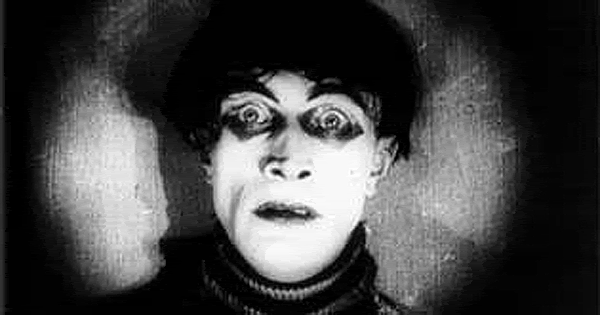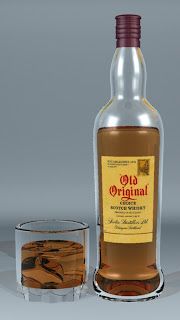Introduction
This is a study investigating Human/Animal hybrids in Modern Art and what society values in regards to human life. Key references will be extracted from
"Tales from Ovid by Ted Hughes (1997)" which contains shape shifting poems expressing human nature and morality. Captions from
" The Naturally Artificial World, A conversation between Patricia Piccinini and Laura Fernandex Orgaz (2007)" will be analysed to show the artists intentions when creating her sculptures.
. "The Mirror Stage by Jacques Lacan (1936)" will give a Psychoanalytic insight into infants emerging perceptions of selfhood and vulnerability. Quotes from published reviews will be obtained from
“The Artistic Experiments of Patricia Paccinini by Megan J Doll” “Patricia Piccinini- Related Individuals by Sarah Hetherington” “On Patricia Piccinini by John Matthews” “Unforced Intimacies: Review by Marcus Bunyan” Images of Piccinini's work will be obtained from
"www.theage.com " . Specifically this assignment will be analysing Greek Mythology and the works of Patricia Piccinini an Australian realist sculptor and the message they convey in relation to discrimination, acceptance and the vulnerability animals and humans share alike.
Main Essay
The idea of a human metamorphosis has been present since the Babylonian times with mythological creatures such as Tiamat, the Babylonian chaos monster of the ocean. Arguably the most renowned hybrid myths still discussed to the present day are that of the Ancient Greeks. A common theme in Greek Myths that have stood the test of time is that the para-human is always perceived to be villainous. Creatures such as the Minotaur whom had the body of a man and the head of a bull. The Minotaur was held in the Cretan Labyrinth for barbarously eating humans, it was here the creature was eventually killed by Theseus. The hideous appearance of the Minotaur was a reflection of its disposition, its ugly nature. The same can be said for Nessus, a centaur that was killed by Heracles after attempting to rape Deianira.
"Dejanire clung there, White with fear-
Paralysed
Between her dread of the river
And her dread of the goat eyed centaur.
Who now plunged straight into
The high-riding boils of brown water" (Hughes, Tales of Ovid, 1997:151)
In Ted Hughes' poem "Hercules and Dejanira" based on Roman Poet Ovid's narrative poem "Metamorphoses" it is expressed that Dejanira is terrified by the grotesque appearance of Nessus before there was any indication of his true agenda. Based on looks and presence, a visceral assumption was made by Dejanira on the character of the centaur. Little has changed since the earliest civilisations in regards to appearance and acknowledgement of ones self image. Humans in their nature will distance themselves from entities that are unfamiliar to them including people. When studying "The Law of Attraction", William Walker Atkinson coined the phrase "Like Attracts Like". People instinctively determine interpersonal attraction by finding similarities of themselves in others whether it be ethnicity, appearance or religion. This notion is possibly why different racial groups separate themselves from others or why, on the broader spectrum minorities are discriminated against by the larger groups. In the case of the Minotaur, the creature was forced to dwell in the Labyrinth not only because of its ferocious nature but because of its inhuman appearance

Deianeira and the Centaur Nessus- Guido Reni(1617-21)
Para-human hybrids in Art and Film tend to be focused on the distinct differences between animals and humans, the barriers that set the two apart. They are often perceived to be frightening as they encapsulate the primitive nature of animals. Piccinini however outlines the similarities between animals and humans as opposed to differences. The Artists work depicts the hybrids in an emotional state the viewer can build a connection with. A common theme of Piccinini's work is vulnerability. In the case of 'The Foundling' (2008) a mutant infant is lying in a baby carrier covered by a blanket, wearing a thick woollen hat”
The foundling's vulnerable eyes are larger than life, disproportionate to its face, and they stare up at the viewer pleading for attention and begging to be nurtured." (Hetherington 12, 11,2008). In human nature as well as in animals there is a natural maternal instinct, although 'The Foundling' is in essence an unsightly obscurity the viewer feels a sense of sorrow for the creature and the impulse to care for it. In contrast this could also represent child neglect, another trait shared between humans and animals. Many species of animal will reject their young if the newborn carries a deformity or is deemed too weak to care for. Survival of the fittest is present in any society be it animal or human. There is a sense of tragedy about 'The Foundling' because the ambiguity and contrasting emotions involved, a sense of wanting to help something so fragile but also being repelled by its appearance similar to impulsively killing a spider out of terror but feeling a sense of guilt afterwards.
The Foundling-Patricia Piccinini (2008)
This sense of vulnerability is again present in Piccinini's 'The Bottom Feeder (2009)'. It depicts a chimera with parts of several animals, the back and shoulders of a human, the extremities of a marsupial, the rear of a mountain goat and the enlarged head of a newt. The posture of the bottom feeder is passive, exposed and completely unprotected which is contrasting with the way chimeras are often depicted in history, often seen as strong, fearsome creatures such as the griffin. "Inevitably the viewer is drawn to the exposed rump through a seemingly unforced interactivity, examining the folds and flaps of the labia and the hanging scrotum of this succulent feeder. Here Piccinini draws on psychoanalysis and Lacan’s theory of the mirror stage in a child’s development." (Bunyan 01, 11,2009) Dr Marcus Bunyan makes comparisons between the sculpture and Jacques Lacan's 'Mirror Stage Theory' in children. The Bottom Feeder is aware and has a clear perception of selfhood and its own vulnerability. The viewer arguably gets a sense of empathy from studying the bottom feeder as most people have felt this kind of vulnerability without means of protecting themselves. Piccinini states "Empathy is at the heart of my practice. I don't think that you really can - or indeed should - try to understand the ethics of something without emotions." (The Naturally Artificial World,2007). Piccinini seems to be correct when she states you can not truly understand the ethics of something without emotion as the viewer can determine the morality of the artist sculptures and what message the convey.


'The Bottom Feeder'-Patricia Piccinini (2009)
'The Long Awaited' (2008) depicts a young boy on a bench sleeping with a naked, wrinkled human/seal hybrid. The sculpture looks tranquil and there is a sense of harmony between the boy and the creature. "The boy too is ambiguous, his features hint at Down's Syndrome but the most striking figure is the way his tiny hand cradles the creature's immense head. 'The Long Awaited' speaks eloquently of acceptance and benediction." (Matthews 05,05,2009). The sense of harmony comes from not only the Down's Syndrome child's acceptance of the hybrid but the hybrid's acceptance of the Down's Syndrome child almost as if they empathise with one another. Humans in their nature are often products of their environment. Their behaviour, the manner in which they integrate with others and how they treat that which is deemed unusual is determined by their peers and surroundings while growing up. It is possible Piccinini is also conveying childlike innocence in her sculptures, the idea that children do not distinguish between race, sex, age or creed forces the viewer to question their own morality. The title 'The Long Awaited' could even suggests the artist wanting to break the barriers that have long segregated different groups of people.
This notion is also apparent in 'Still Life with Stem Cells' (2002) a sculpture depicting a young girl interacting with several fleshy, formless mounds "She smiles complacently, her gaze abstractedly fixed upon a stem cell situated in front of her. Her left hand rests upon a mound at her knee as she
cradles yet another cell in her right arm, seemingly recognizing it as a fellow
sentient being" (Doll 09,2003) The underlining theme here is what form of life do we deem worthy. There is a pecking order in the animal kingdom with humans at the top but who is to determine what life is worthless and what is worthy. Piccinini executed this idea by using perhaps the lowest form of life, a stem cell.


Top: 'The Long Awaited'-Patricia Piccinini (2008)
Bottom: 'Still Life with Stem Cells'-Patricia Piccinini (2002)
Conclusion
In conclusion, Analysis of both Greek Mythology and Patricia Piccinini's sculptures demonstrates presenting Hybrids in a different light from each other however both giving insight into human's harsh treatment of outsiders, whether shutting them away from the world or making a spectacle of them there is a hierarchy in society based on appearance and self image. Arguably there is a sense of empathy as humans build a visceral emotional connection with the outsider as they can relate to the feelings of vulnerability and sorrow at a misfortune. However of the people who do feel a sense of deep inward empathy, very few will acknowledge outsiders existence through fear of being different. Becoming outsiders themselves.




















































